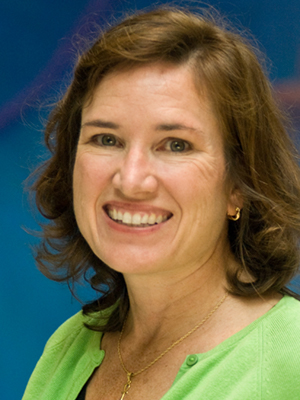
When designing content for the ACR/ARP Annual Meeting, Annual Meeting Planning Committee Pediatrics Chair Anne Stevens, MD, PhD, said the pediatric rheumatology programming needs to reflect the needs of the subspecialty while also remembering that many general rheumatologists use the Annual Meeting as an opportunity to stay up to date in pediatric rheumatology, as well.
“We’re super excited about our pediatric sessions,” said Dr. Stevens, Division Chief and Professor of Pediatrics at the University of Washington, Seattle. “Not only will pediatric subspecialists find the latest information they need to care for their patients, adult rheumatologists will also find what they need for those times when they treat children or young adults who have transitioned to their care.”
Dr. Stevens said that two stand out as particularly challenging for pediatric rheumatologists.
“Now that clinical genetic testing is so much more available, we have the big challenge of making decisions about when and how to use genetic testing,” she said. “When do we do whole exome sequencing? What do we do with the data? How can it be used to help patients and to direct therapy?
“Our patients’ families really want genetic testing. They want to have a genetic diagnosis. They want to know what caused their child’s disease.”
For rheumatologists looking for guidance regarding genetic testing, Dr. Stevens recommends In Natura Veritas: Mechanism to Targeted Therapy in Rare Monogenic Diseases (8:30 – 10:00 AM Sunday, Nov. 10).
“Two of the nation’s experts in genetic diagnoses of early-onset inflammatory disease will share how they approach patients they suspect they have genetic variants that contribute to their disease,” she said. “When diagnosed properly through genetics, physicians have a clear path for management. There’s no doubt about the course to take. There’s no trial and error with medicines.”
A second session will update the audience on the successes of the rare disease networks. Rare Disease Detectives: Getting Answers to Impossible Questions (1:00 – 2:00 PM Monday, Nov. 11) will feature a leading geneticist with the Undiagnosed Disease Network and a parent telling the story of how families linking together were able to drive a research agenda leading to the discovery of a gene that causes DADA2.
Another big challenge in pediatric rheumatology is scleroderma.
“We see localized scleroderma much more often in pediatrics,” Dr. Stevens said. “This can be very serious, leading to permanent deformities and extracutaneous manifestations like seizures and uveitis. The problem is, the treatments for localized scleroderma are immunosuppressants that have serious side effects. So we want to use these medicines only as long as necessary. However, we’re often unsure about when to stop. How do we know if the disease is active or not? And once we stop therapy, how do we know when the disease is coming back? It’s really hard to assess these patients. We can’t do biopsies every time they come into the clinic.”
These questions will be addressed during Juvenile Localized Scleroderma: Does this Child Have Active Disease? (11:00 AM – 12:00 PM Tuesday, Nov. 12).
“The nation’s leading experts on clinical assessments for localized scleroderma disease activity will lead the session,” Dr. Stevens said. “They will teach clinicians what features you can see with your eyes or feel with your hands that are reflective of active disease. There are also new technologies for assessing disease activity, such as MRI, ultrasound and thermography, which will be discussed, as will new blood tests being developed for detecting disease activity.”
Another timely topic in pediatric rheumatology is interstitial lung disease associated with systemic juvenile idiopathic arthritis (JIA).
“This is somewhat perplexing,” Dr. Stevens said. “It’s a fibrotic disease that occurs in patients with a completely different disease than scleroderma. These juvenile arthritis patients have this smoldering lung disease that previously went unrecognized much of the time. Now, researchers have some data for us to help us know when to test for interstitial lung disease in patients with systemic JIA and what may be contributing. There are some theories that the way we treat these patients may be contributing to the lung disease.”
She recommends Interstitial Lung Disease Associated with Systemic JIA (8:30 – 10:00 AM Tuesday, Nov. 12) for those interested in learning more.
“There has been so much new data to come out in the past year,” she said. “The pediatric research community has been so active and making huge progress in multiple diseases. This is particularly true for Kawasaki disease. There’s a lot of new data about how to treat patients more effectively. It’s really helping in the everyday clinical work that we do.”
Kawasaki Disease Treatment: Old & New in 2019 (11:00 AM – 12:00 PM Monday, Nov. 11) will bring attendees up to date on this research, including the draft of the new ACR treatment guideline.
New! Pediatric Community Lounge
Those involved in pediatric rheumatology can connect with others in the field at the new Pediatric Community Lounge, located in Building B of the Georgia World Congress Center on Level 2 across from Rooms B216 and B217. The lounge will be open from 7:00 AM – 6:00 PM Sunday, Nov. 10 – Tuesday, Nov. 12.
